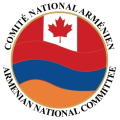Diarbekir’s St. Giragos Church Foundation Reclaims Its Property
- (0)

Diarbekir’s St. Giragos Church Foundation Reclaims Its Property –
17 pieces of property was returned to the Saint Giragos Armenian Church Charitable Foundation in Diarbekir. As reported by Armenpress, this was published by the Turkish aykiridogrular.com website. In 2009
during the reconstruction works of the Saint Giragos Church an Armenian-language property register was found, according to which during the years of 1910-1921 190 estates in 20 different neighborhoods belonging to Armenians living there before were
registered. After translating the register into Turkish, the Saint Giragos Armenian Church Charitable Foundation in 2009 submitted an application to the Regional Directorate of Foundations for the return of the registered real estate that had been taken over by the
Turkish state.
After the clarification of the details of the submitted application, the Regional Directorate of Foundations adopted a decision to return 17 estates with a territory of about 15,000 square meters to the Armenian Foundation.
Vartkes Ergun Ayik, the chairman of the executive board of Saint Giragos Armenian Church Charitable Foundation in Diarbekir expressed his satisfaction on the return of the property stating: “The fields and gardens, which earlier belonged to our community, are currently occupied. 17 estates of 190 have been returned. To return the rest might be quite difficult”.
Vartkes Ergun Ayik informed that the major part of the money taken for the reconstruction of the Saint Giragos Church has been paid, though the foundation still has a debt of 1 million Turkish Liras to pay. He stated that they need the assistance of the community to pay the debt.
St. Giragos is an Armenian Orthodox Church in Diarbekir, which although out of use has recently been renovated in part as a sign of reconciliation with the Christian community. It was seen as one of the largest and most important Armenian churches in the Middle East, with seven altars. It was closed during the Armenian Genocide in 1915-1916, and was returned to the local Armenian community in 1960, although due to emigration in the 1970s and 1980s the local Armenian community was much diminished. According to some art historians, the church is the largest in the Middle East. The complex sprawls over 3,200 square meters and includes priests’ houses, chapels and a school. The church was seized by the German army in 1913 and served as their local headquarters until 1918, when it was converted into a fabric warehouse. St. Giragos had several unique architectural features. Vartkes Ergun Ayik, the chairman of the executive board of Saint
Giragos Armenian Church Charitable Foundation in Diarbekir said: “Churches normally have one altar but St. Giragos has seven altars. Its original roof was covered with the earth from around the region. We will do it again. The earth has been stripped of seeds to prevent the growth of plants. It should also be vented regularly, every year.” The chairman, whose family is originally from the southeastern province, said the church was handed over to the foundation by the General Directorate of Foundations in the 1950s and continued providing church services until 1980. After the founding of the Turkish Republic in 1923, it was used as a state warehouse for canvas and fabrics, and then,
despite sporadic efforts by the dwindling Armenian community in Diarbekir, it had been left to deteriorate and decay until 2009, when a few Armenians born in Diarbekir but living in Istanbul, formed a Foundation Board under the auspices of the Armenian Istanbul Patriarchate, with the goal of reconstructing the church, as well as to start a legal process to reclaim title to the significant land holdings originally belonging to the church.


















